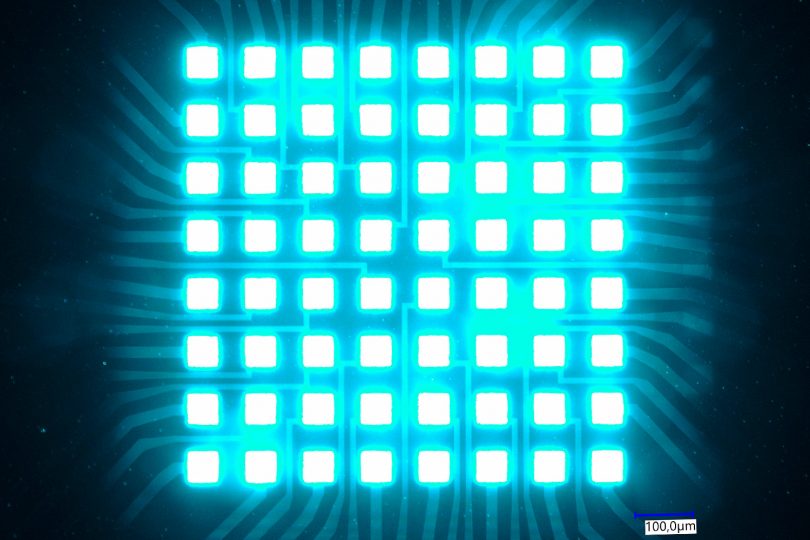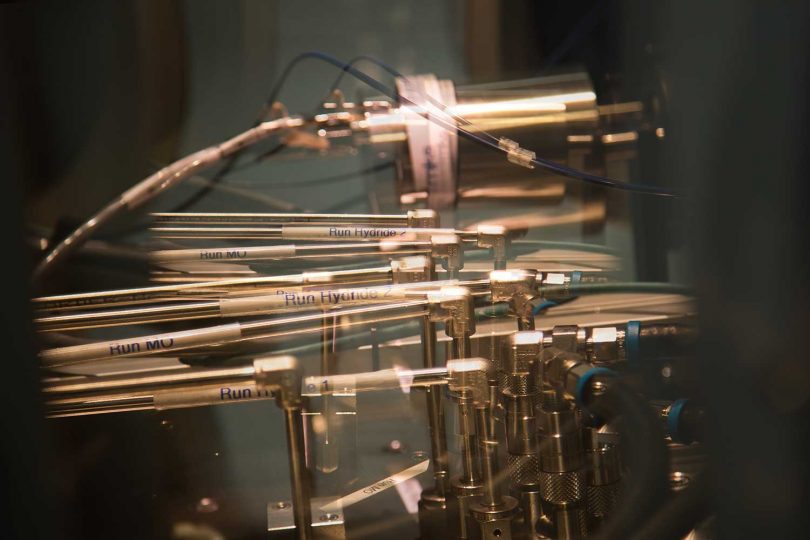Successfully integrated qubit control in quantum computers TU Braunschweig researches scaling solution for Quantum Valley Lower Saxony
The biggest challenges in quantum computing currently lie behind the word scalability. The more quantum bits (qubits) the computing system has to bring together, the more electronic lines have to reach the core of the supercomputer, for example. At the same time, however, each electronic line conducts heat to a point in the quantum computer that should remain as cold as possible. Researchers at the TU Braunschweig have now developed a control chip that reaches more qubits with fewer wires and therefore less heat. The success of the new control unit is being utilised within the quantum computer of the Quantum Valley Lower Saxony (QVLS). The current results were recently published in the journal IEEE Transactions on Circuits and Systems Part II: Express Briefs.
Even if classical and quantum computers work completely differently: There are also parallel problems. If you demand too many signals and operations from the laptop simultaneously, you will soon hear a loud whirring noise from the air cooling. Eventually, the entire computer may even overheat and switch off. Most quantum computers do not cool with air, but with liquid helium to near the absolute minimum temperature of -273 degrees Celsius. To keep these extreme conditions stable, only a minimum amount of heat may be generated on the crucial chip.
“When designing integrated circuits for quantum computers, we always work on two challenges at the same time due to the low temperature: firstly, the chip itself must be able to work even in a frozen state. Secondly, when it is running, it must not consume too much power. At these temperatures, every milliwatt counts,” says Professor Vadim Issakov from the Institute for CMOS Design at TU Braunschweig.
German-Japanese collaboration
As part of the Quantum Valley Lower Saxony (QVLS), the Institute for CMOS Design headed by Professor Vadim Issakov and the Quantum RF group (group leader Peter Toth) have developed a chip that can manipulate several trapped ions into qubits even at low temperatures. This means that there is no longer an associated connection to the chip in the cryogenic area for each qubit, but only a few connections. By controlling an antenna, the chip sends precise signals to the trapped ions in order to change the energy of the outer electron in a targeted manner. For the quantum computer, this is the moment at which a commanded algorithm is executed by the hardware.
The scientists at TU Braunschweig solved the dual challenge of functionality at cryogenic temperatures and the lowest possible power consumption together with a research group from Keio University in Tokyo. The chip experts have been working together internationally for over a year and a half. In addition to reciprocal guest lectures and visits by scientists and students, this also includes the exchange of complementary expertise. For example, the new chip has a digital design area that was developed with the help of Japanese colleagues Shuya Nakagawa and Kaoru Yamashita. This was then integrated with analogue circuits by Paul Shine Eugine, Alexander Meyer and Peter Toth and is currently being tested in the quantum computer setup in Hanover. In addition, the team is already working on improvements for future chip generations.


